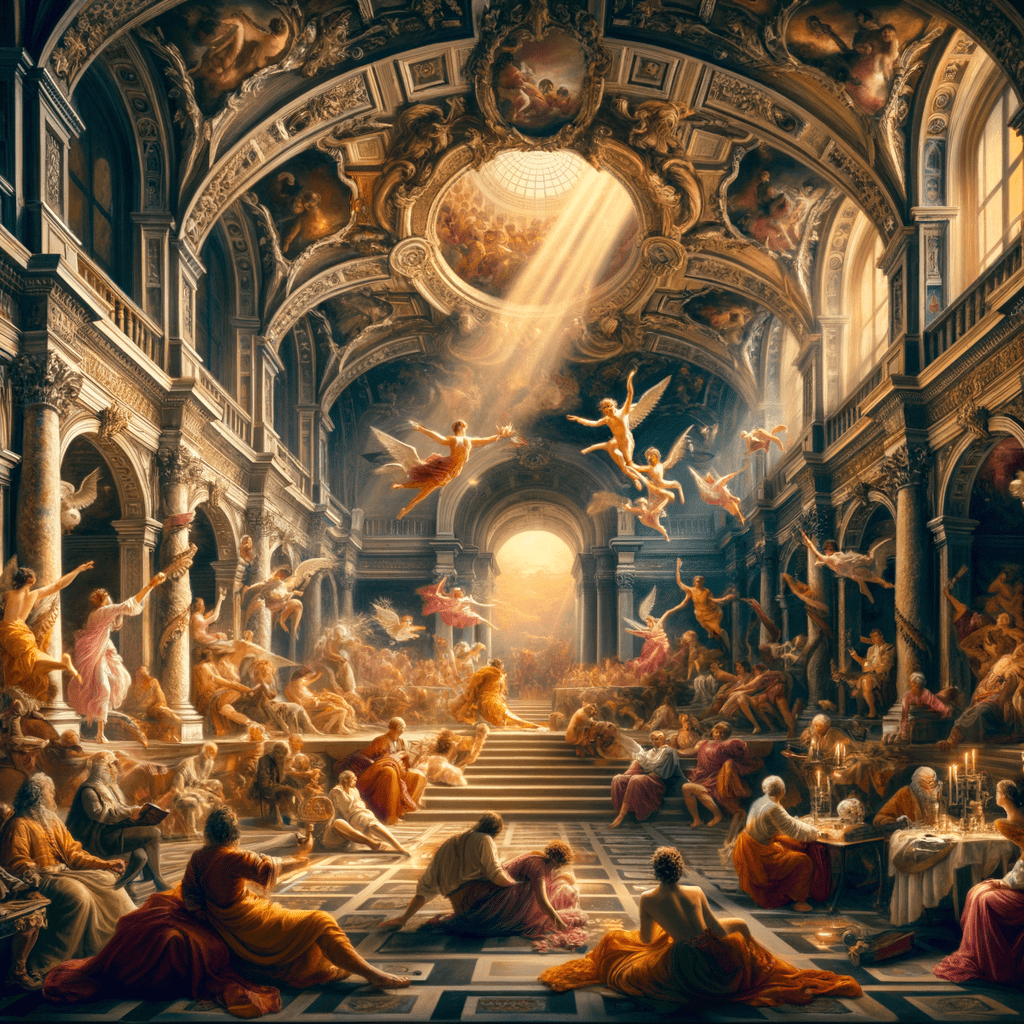Analyze how the Baroque period utilized drama and movement to emotionally engage viewers, transforming artistic spaces into true theatrical stages.
The Baroque, an artistic period that dominated Europe from the late 16th century to the early 18th century, is known for its drama, movement, and ability to emotionally engage viewers.
The Baroque is an artistic movement that had a profound impact on various fields, including architecture, painting, sculpture, and music. Its main characteristic is theatricality, which is manifested through the use of dramatic effects, dynamic movement, and the ability to emotionally involve the audience.
This article examines how the Baroque used these elements to transform artistic spaces into true theatrical stages.
- Origin and Historical Context
- Characteristics of the Baroque
- Theatricality in Baroque Art
- Significant Examples
- Conclusion
Origin and Historical Context
The Baroque originated in Italy at the end of the 16th century, during a period of significant social, political, and religious changes. The Catholic Counter-Reformation played a crucial role in the development of the Baroque, as the Church used art as a propaganda tool to win back the faithful. Baroque art needed to be spectacular and engaging, capable of conveying religious messages in an immediate and powerful way.
Characteristics of the Baroque
The main characteristics of the Baroque include:
- Dramatic Quality: The use of strong contrasts between light and shadow, vibrant colors, and dynamic compositions to create a theatrical effect.
- Movement: Baroque works often depict scenes in motion, with figures that seem to emerge from the canvas or sculpture.
- Emotion: Baroque art aims to emotionally engage the viewer, evoking feelings of awe, wonder, and devotion.
- Decorativism: The abundant use of decorations, ornaments, and elaborate details to enrich the artwork.
Theatricality in Baroque Art
The theatricality is one of the most distinctive aspects of Baroque art. Baroque artists used various techniques to create a theatrical effect, including:
- Optical illusion: The use of forced perspectives and trompe-l’œil to create the illusion of depth and movement.
- Dynamic Compositions: Baroque works often feature asymmetrical and diagonal compositions, which impart a sense of movement and drama.
- Interaction with the Viewer: Figures in Baroque works often look directly at the viewer or seem to interact with them, creating a sense of engagement.
Significant Examples
Some significant examples of Baroque art include:
- Bernini: Gian Lorenzo Bernini is one of the greatest Baroque sculptors. His works, such as the Ecstasy of Saint Teresa, are renowned for their dramatic quality and sense of movement.
- Caravaggio: Michelangelo Merisi da Caravaggio is renowned for his innovative use of light and shadow, which gives his works a unique theatrical effect. An example is The Calling of Saint Matthew.
- Rubens: Peter Paul Rubens is famous for his dynamic compositions and vibrant colors. His works, like The Judgment of Paris, are perfect examples of Baroque art.
Conclusion
In conclusion, the Baroque era transformed art into a theatrical spectacle, using dramatization, movement, and emotional engagement to create an immersive experience for the viewer. The innovative techniques and masterful use of visual effects made Baroque art unique and unforgettable, leaving a lasting impact on the history of art.




